Background
The workshop was held on Sunday 22 April 2018 in Montreal, Quebec, Canada as part of the CHI 2018 conference. As explained in the proposal, the workshop focused on developing the conceptual framework for an HCI living curriculum Community of Practice (CoP). Prior to the workshop, participants were asked to produce a position paper and design artifact(s) outlining their vision of the CoP and living curriculum.
The workshop had four primary goals:
- To develop the conceptual framework and user experience of the HCI living curriculum
- To assess what tools, platforms and services may already be available and to assess their long-term viability and value to the HCI community
- To articulate the information architecture and infrastructure for a Community of Practice (CoP) of HCI educators
- To create working groups to implement the first iteration of the HCI living curriculum post-workshop
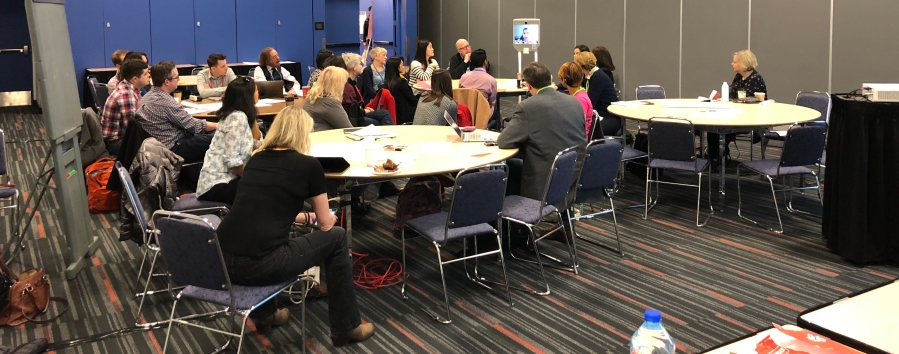
Attendees:
- Elena Agapie, University of Washington
- Mark Chignell, University of Toronto
- Melissa Densmore, University of Cape Town
- Abby Goodrum, Wilfred Laurier University
- Sukeshini Grandhi, Eastern Connecticut State University
- Colin Gray, Purdue University
- Dick Henneman, Georgia Institute of Technology
- Amalia Kallergi, Tilburg University
- Naureen Nizam, University of Toronto Scarborough
- Paul Parsons, Purdue University
- Evan Peck, Bucknell University
- Leigh Ellen Potter, Griffith University
- Ariane Moraes Bueno Rodrigues, Pontifical Catholic University of Rio de Janeiro
- Mary Beth Rosson, Pennsylvania State University
- Anne Roudaut, University of Bristol
- Madeline Smith, Colgate University
- Michael Stewart, James Madison University
- Na Sun, Pennsylvania State University
- Gerrit van der Veer, Dalian Maritime University; LuXun Academy of Fine Arts
- Lauren Wilcox, Georgia Institute of Technology
Organizers:
- Olivier St-Cyr, University of Toronto
- Craig M. MacDonald, Pratt Institute
- Elizabeth Churchill, Google
- Jennifer J. Preece, University of Maryland [not in attendance]
- Anne Bowser, Woodrow Wilson International Center for Scholars [not in attendance]
Part I: Conceptual Framework Brainstorming
The morning session was dedicated to brainstorming the conceptual framework for the living curriculum. To frame the discussion, attendees were split into 3 groups and asked to perform a SWOT analysis (Strengths-Weaknesses-Opportunities-Threats) for the living curriculum CoP.

- Desirability: Scope
- We know the HCI community wants a living curriculum, but what is its scope?
- Who is the audience? What do they (we) want or need? What are the context(s) of use?
- We know the HCI community wants a living curriculum, but what is its scope?
- Feasibility: Technology
- We know there are technical tools out there, but will they work for this purpose or will it need to be built?
- What functions are required? What are the technical requirements? What is a realistic timeline for implementation?
- We know there are technical tools out there, but will they work for this purpose or will it need to be built?
- Viability: Resources/Finances
- We know there needs to be resources to support this effort, but how much is needed and where will it come from?
- What resources are needed for implementation and for long-term sustainability? How can a CoP help build and maintain support?
- We know there needs to be resources to support this effort, but how much is needed and where will it come from?

Strengths
Three key strengths emerged from the discussion:
A Community Already Exists
A key strength is that there already exists a globally-distributed and inclusive group of HCI scholars and practitioners who are interested in HCI education. Specifically, it was discovered that there are already some small, informal groups of HCI educators who offer each other support, guidance, and advice. A formal CoP should therefore seek to connect and integrate these groups as much as possible.
The Promise of Global Reach
Another strength was the power of web-based technologies to make materials instantly accessible to the entire community. Choosing the right platform/tool is obviously a critical decision, but there are already many tools in existence that can support the CoP and would not require significant development.
Desire to Share Expertise
Finally, there seems to be a desire throughout the HCI community to share lessons learned about successful (and unsuccessful) pedagogical strategies. Attendees highlighted the value of both sharing and demonstrating your own expertise and building on the expertise of others.
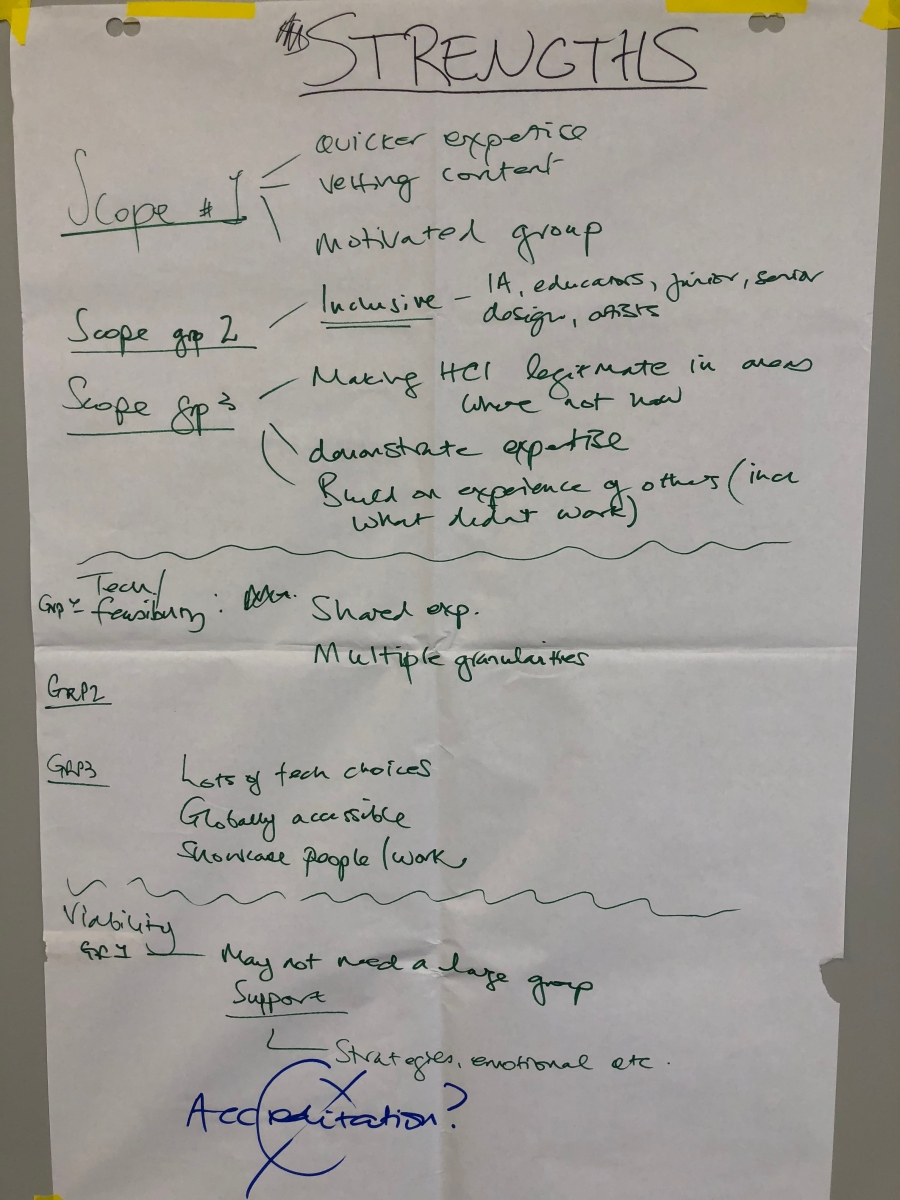
Results: Weaknesses
Four major weaknesses emerged from the discussion:
Sustainability of a CoP
Concerns were raised about the resources required to both create and maintain a technical platform while also managing a community of practice (i.e., marketing/communication, data management, planning, etc.) and keeping the content fresh. All of these efforts would require people’s time and energy, so it must be perceived as worth the investment.
Complexity of Managing a Living Curriculum
Another weakness was the inherent scope and procedural complexity of making decisions about what educational content to include in a living curriculum. Who makes these decisions? What criteria are used to make them? Who decides on the pedagogical value of educational materials?
Timeliness and Relevance of Educational Materials
Attendees noted the importance of keeping educational materials relevant and up-to-date. A collection of dated or “stale” educational resources offers little value, so there must be ongoing efforts to keep the material fresh and reflective of current and emerging HCI trends.
Ownership/Attribution Issues
Finally, concerns were raised about the ownership and attribution of educational materials shared with the CoP. For example, how are content creators credited? Who “owns” the materials? Is there a way to “legitimize” contributions to the living curriculum so that it can go onto a CV?

Results: Opportunities
Three major opportunities were identified:
Quality Educational Materials
Simply having access to a collection of quality educational materials was identified as a key opportunity, as long as the materials were appropriately contextualized (i.e., how and under which conditions was this used?). Attendees also saw value in seeing the provenance and history of materials, which would add additional context.
Support for HCI Educators
Another opportunity was providing support for HCI educators at all stages of their careers. Specific ideas included leveraging existing materials (cases and examples), adding a form of “peer review” to get expert feedback on materials, offering a discussion forum where educators could seek and provide emotional support, and generally giving members of the community an opportunity to share their teaching expertise and experience with others.
Recognition for Excellence in HCI Education
Another major opportunity identified was the possibility of creating a ‘web of science’ for HCI teaching and pedagogy. This resource could allow for rating and ranking of materials based on quality, relevance, and other criteria relevant to the community, which could then be converted into a teaching “impact factor” for individual contributors. Further, the platform could be used to award skilled HCI educators and offer opportunities to recognize “Pedagogical Leaders” who make significant contributions to HCI education.
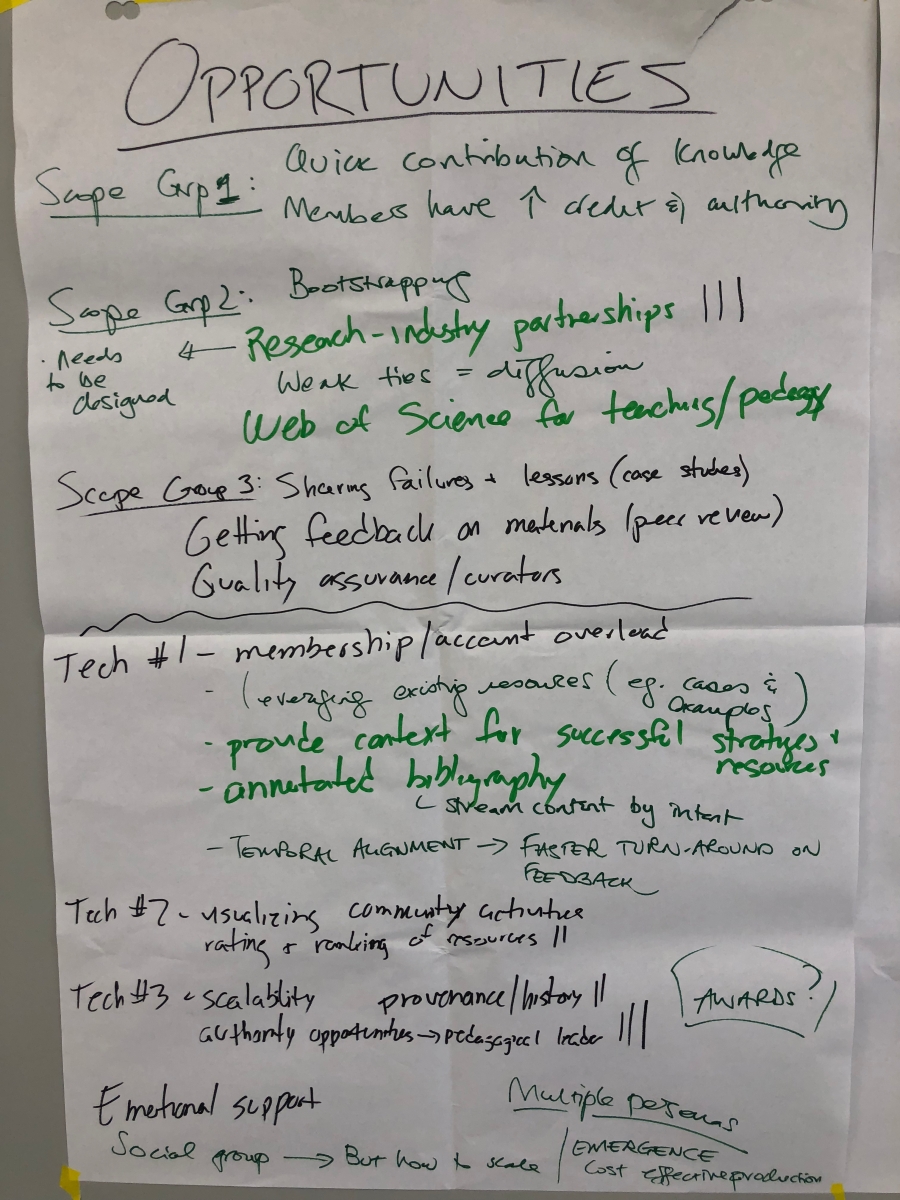
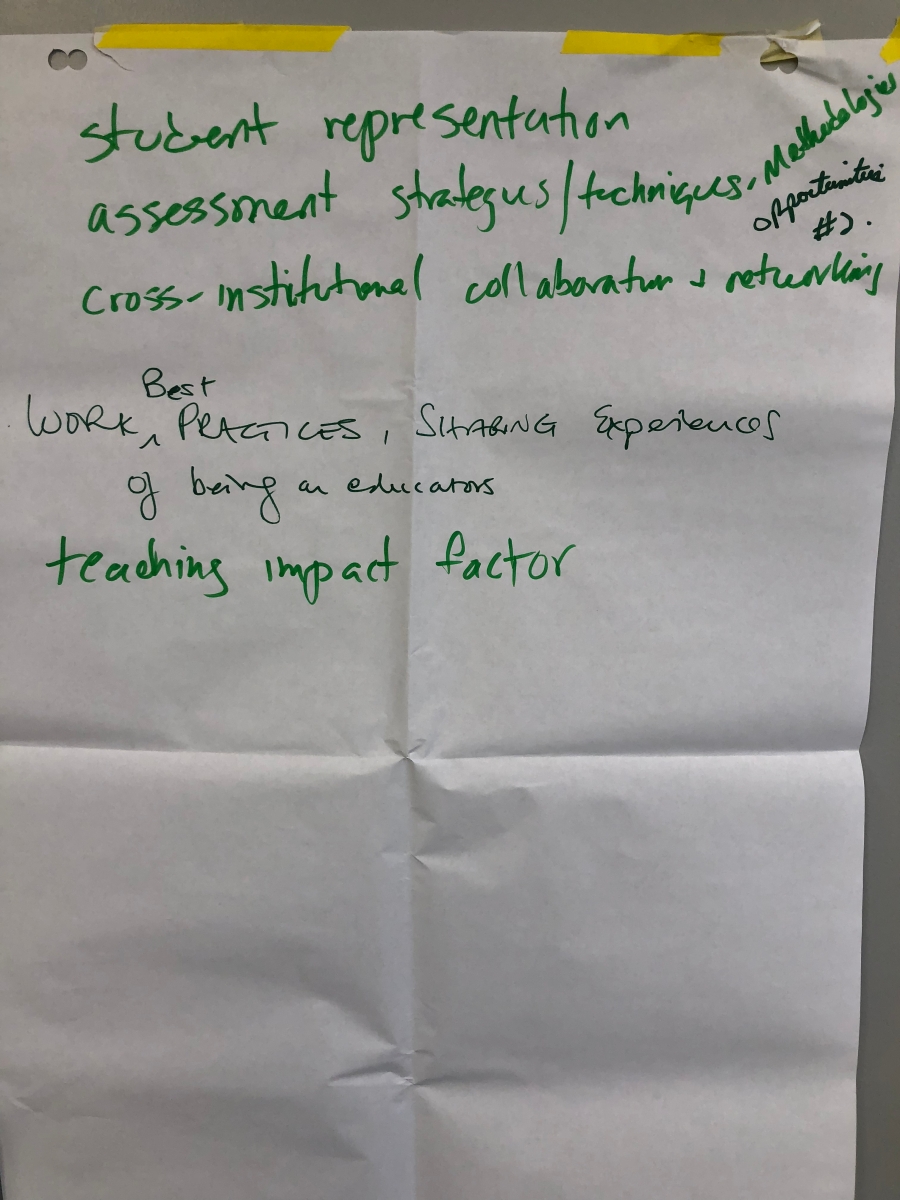
Results: Threats
Three major threats were identified:
Context and Scope
Determining the right context and scope for educational materials represents a threat to the viability of the living curriculum. For example, there’s a risk of adding too much (or not enough) information about each individual item added to the curriculum, which will limit re-usability. There’s also the threat of getting homogeneous contributions that only reflect certain perspectives or approaches to HCI education.
Motivation and Incentives
Another threat is the existence (or lack thereof) of motivations and incentives to contribute. To what extent can sharing educational resources or expertise become part of the “lived experience” of teaching HCI? Further, every member of the community is juggling multiple responsibilities and may not be able to contribute equally, which creates a risk of getting a significant amount of contributions from a small number of individuals.
Funding and Scalability
Finding appropriate financial support to create and sustain the living curriculum will be a persistent threat. Likewise, getting a critical mass of members to join the CoP will be an ongoing challenge, especially when so many people are already members of multiple forums/networks and may be hesitant to join another.
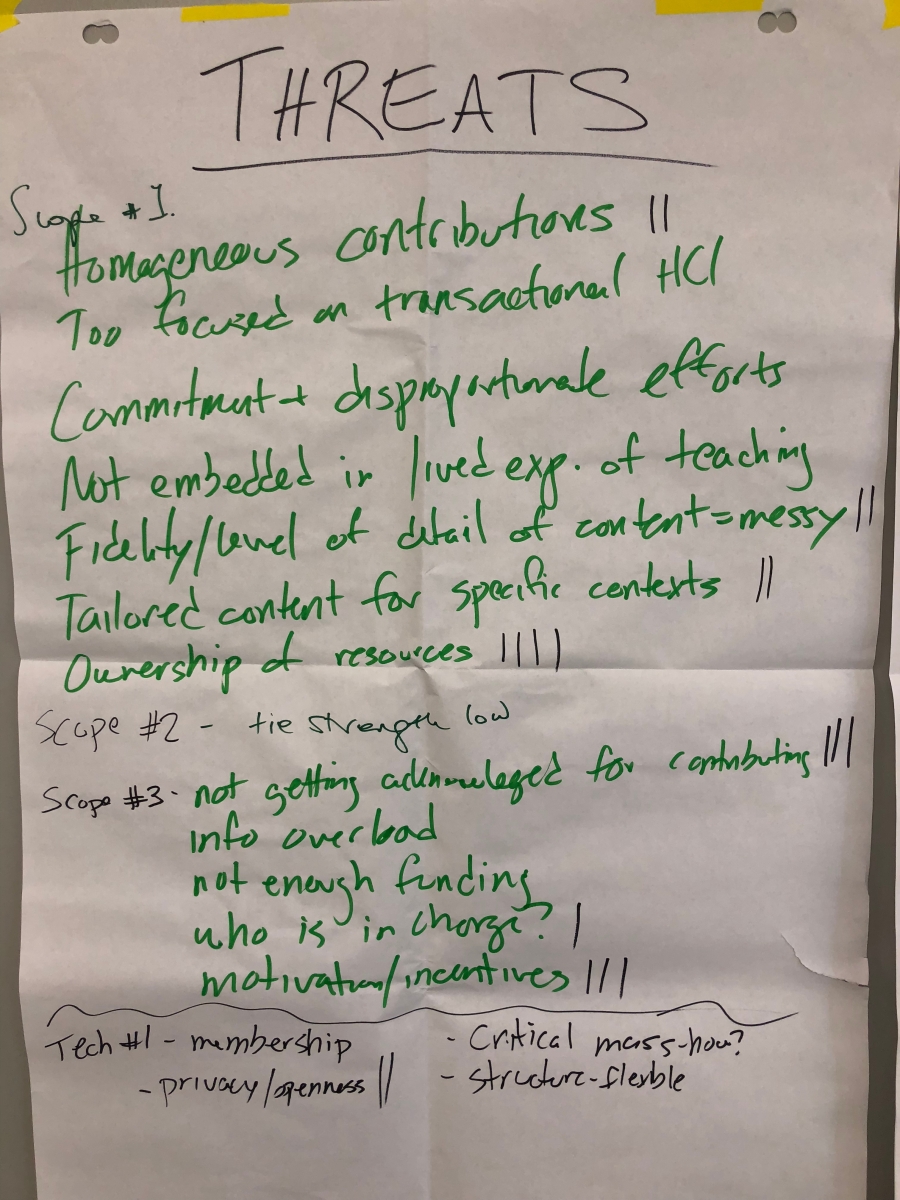

Part 2: Design Exercise
In the second half of the workshop, attendees were split into groups and asked to consider the results of the SWOT analysis and sketch a design for HCI Living Curriculum Community of Practice that would address:
- implementation and funding (i.e., resources that support it)
- content creation and architecture (i.e., strategy, format, etc.)
- platform and design (i.e, requirements, user interface prototype)
Idea 1: Support for HCI Educators
This focused their discussion providing support for HCI educators. To that end, they proposed having SIGCHI and/or ACM taking ownership to lend legitimacy to the effort and expand its potential reach. The resulting platform would need to have a shared vocabulary and glossary of terms translated into multiple languages. Such a system would also need to have robust privacy and sharing features that offer flexibility to individual contributors. Additionally, the group proposed having a social interaction component that is distinct from the content, perhaps an “HCI Confessional” area that allowed for anonymous sharing of worries or concerns about teaching HCI.
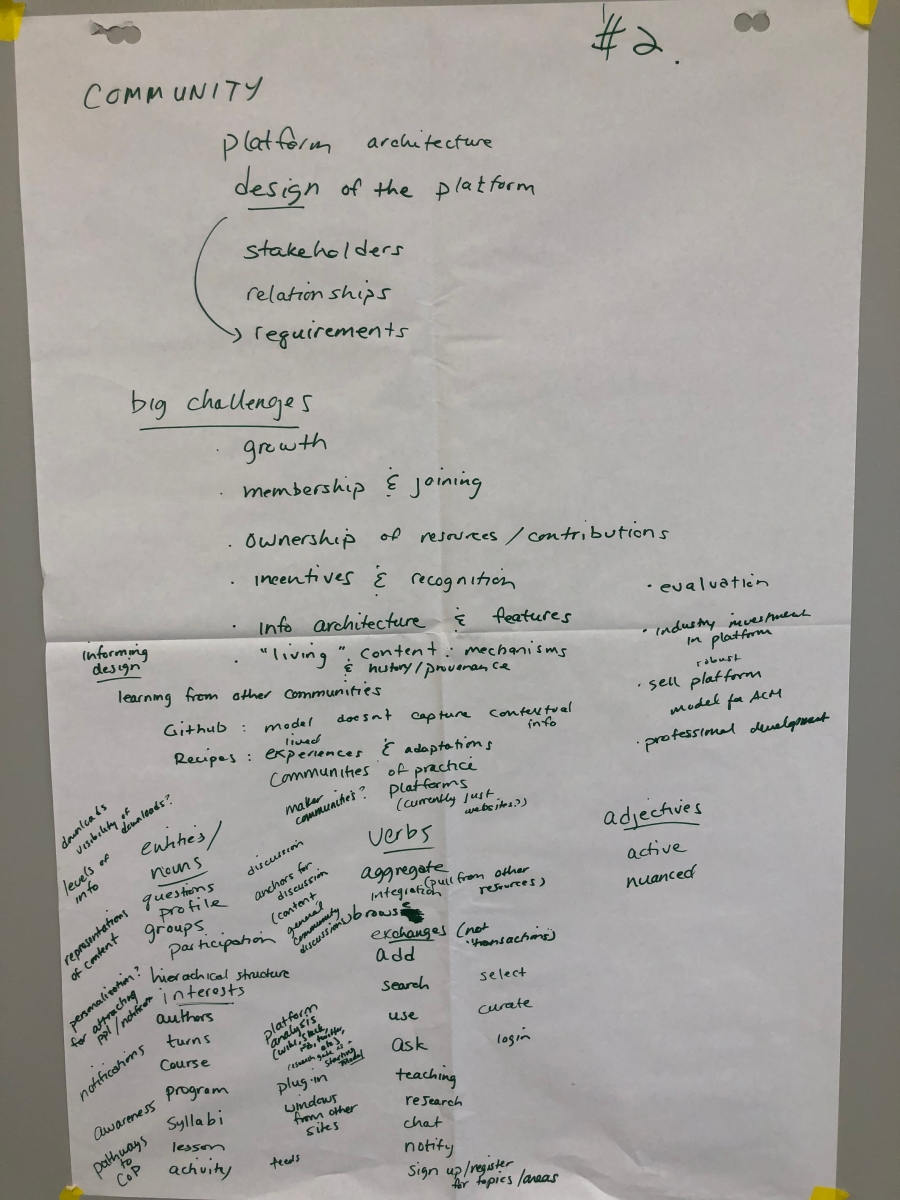
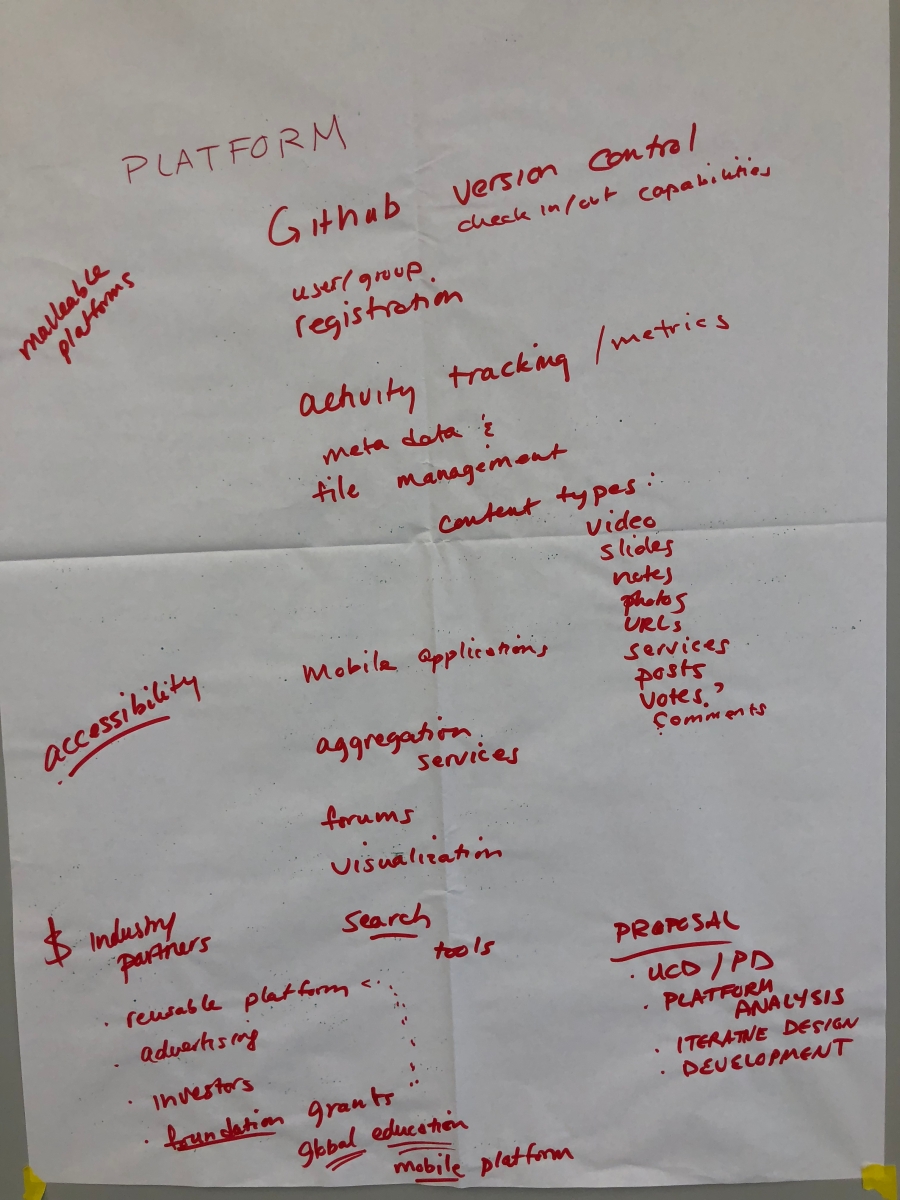
Idea 2: Remixing Curricula
The next group explored the idea of remixing HCI course content and curricula. Inspired by the Makerbot Thingiverse, they proposed creating an online platform for sharing teaching and other educational materials for the express purpose of re-use and re-mixing. Thus, the content would include not just the materials themselves but also “design knowledge” about those materials and their use in various contexts. They also envision using small grants (or getting ACM financial support) to seed content for the platform, possibly in the form of a competition to reward people for contributing quality materials and for successfully modifying and implementing those materials in other contexts. To get things started, they also suggested utilizing existing platforms (Slack and Github) that would support communication and dissemination of materials. They also proposed creating an edited book or journal of education “war stories” with successful and unsuccessful examples.
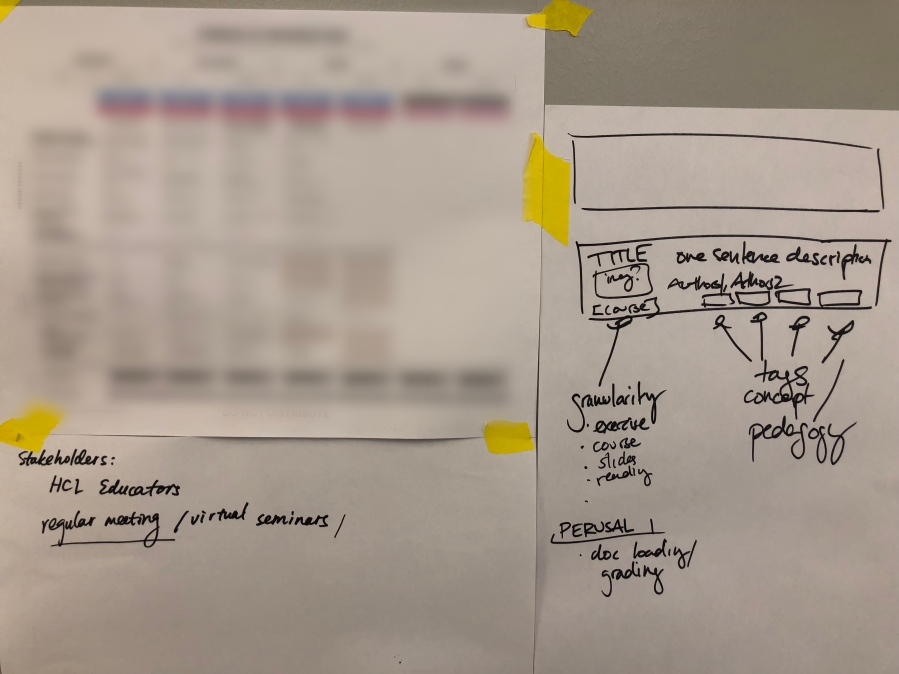
Idea 3: Curriculum Development Grants
This group presented an idea centered on developing a grant program that could support 6 HCI educators as they develop and evaluate a full course on specific topics chosen by the community. Over a three-year period, grantees would create all the course materials and then recruit other educators to “test drive” the course in different contexts, collecting data on the course’s overall effectiveness. They envision using existing platforms – Slack, Reddit, Canvas, and Github – to facilitate communication and provide provenance tracking for materials. Such a program would provide recognition for junior faculty, and it would (ideally) be renewable so that content stays relevant and up-to-date. The end product of each grant period would be a full course plus a reflection about its effectiveness. These products could be published in standalone journal, like the Journal of the HCI Living Curriculum.

Idea 4: Community Building
The last group focused on building and supporting the community. Rather than developing a novel platform, they proposed using existing tools as much as possible (such as Slack and Github) and, if necessary, doing an environmental scan to identify additional tools that may be useful. An important characteristic of this proposal was to encourage different modes of discussion and to facilitate communication at different levels within the community. For example, there could be regular Facebook Live video sessions or webinars related to HCI education, probing questions posted to the community on a weekly or bi-weekly basis, or events focused on sharing resources and advice at conferences or other formal gatherings. Concurrently, efforts would focus on aggregating these resources and storing them in a database (with appropriate metadata) that could grow and evolve over time.
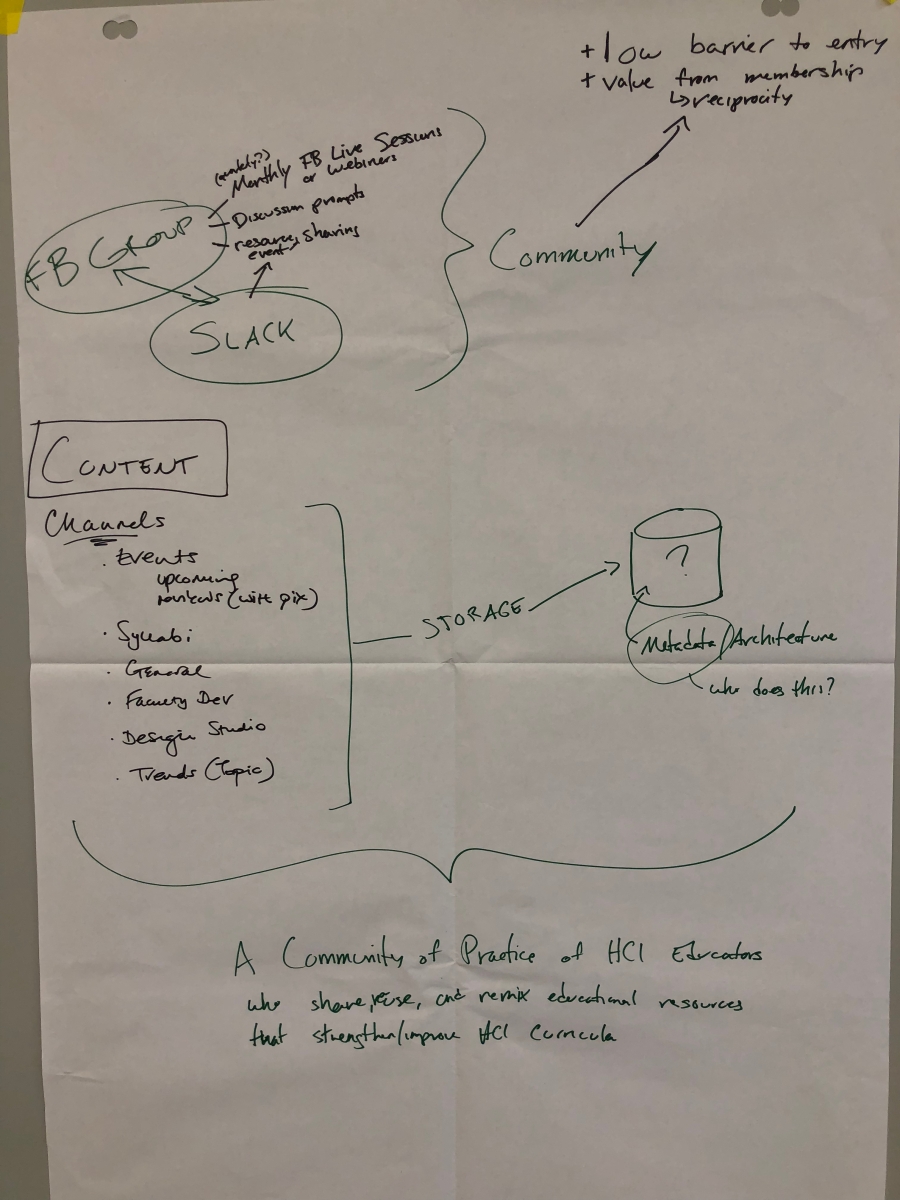
Conclusion & Next Steps
While each group presented a unique vision for the living curriculum CoP, there were some common themes emphasized across each proposal:
Use existing platforms and tools
All of the proposals included some mention of utilizing existing tools rather than developing a custom solution. Rather than focusing on developing a new platform or a custom solution, efforts should instead seek to examine existing platforms and consider their applicability for the community.
Focus on informal communication and discussion
Each proposal also emphasized the importance of establishing communication channels for members of the community. The common thread was that people would likely appreciate having a platform to discuss issues related to HCI education with their peers and colleagues. These discussions can strengthen ties within the community and provide a network of support for new and experience educators.
Find formal ways of sharing HCI teaching materials and/or experiences
Another common thread across all proposals was to establish formalized ways of sharing HCI teaching materials and/or knowledge about HCI education practices. The exact format and structure will be determined, but there is a clear need to establish some way of incentivizing contributions to the living curriculum and provide a sense of authority and legitimacy to these efforts.
Seek funding opportunities
Lastly, each proposal highlighted the importance of funding to support these activities. Whether the funding comes from ACM, SIGCHI, or some other entity, getting financial support for activities related to the living curriculum should be a key area of focus.
To explore these ideas further, the workshop concluded with the formation of three working groups:
- Implementation and funding
Explore grant opportunities that would support innovation in HCI pedagogy. Examine sponsorship or partnership options. - Design and platform development
Conduct an environmental scan of existing tools/technologies that could support different aspects of the living curriculum CoP. - Content creation
Create a Slack channel to serve as a testing ground for facilitating informal discussions and sharing/collecting educational materials. Explore formal and informal ways that would support sharing and re-using HCI educational content and lessons learned.
Research progress on the HCI living curriculum was summarized in a recent ACM interactions article:
- St-Cyr, O., Jovanovic, A., Chignell, M., MacDonald, C. M., & Churchill, E. (2018). The HCI Living Curriculum as a Community of Practice. ACM Interactions, 25(5), 68-75. [View/Download]